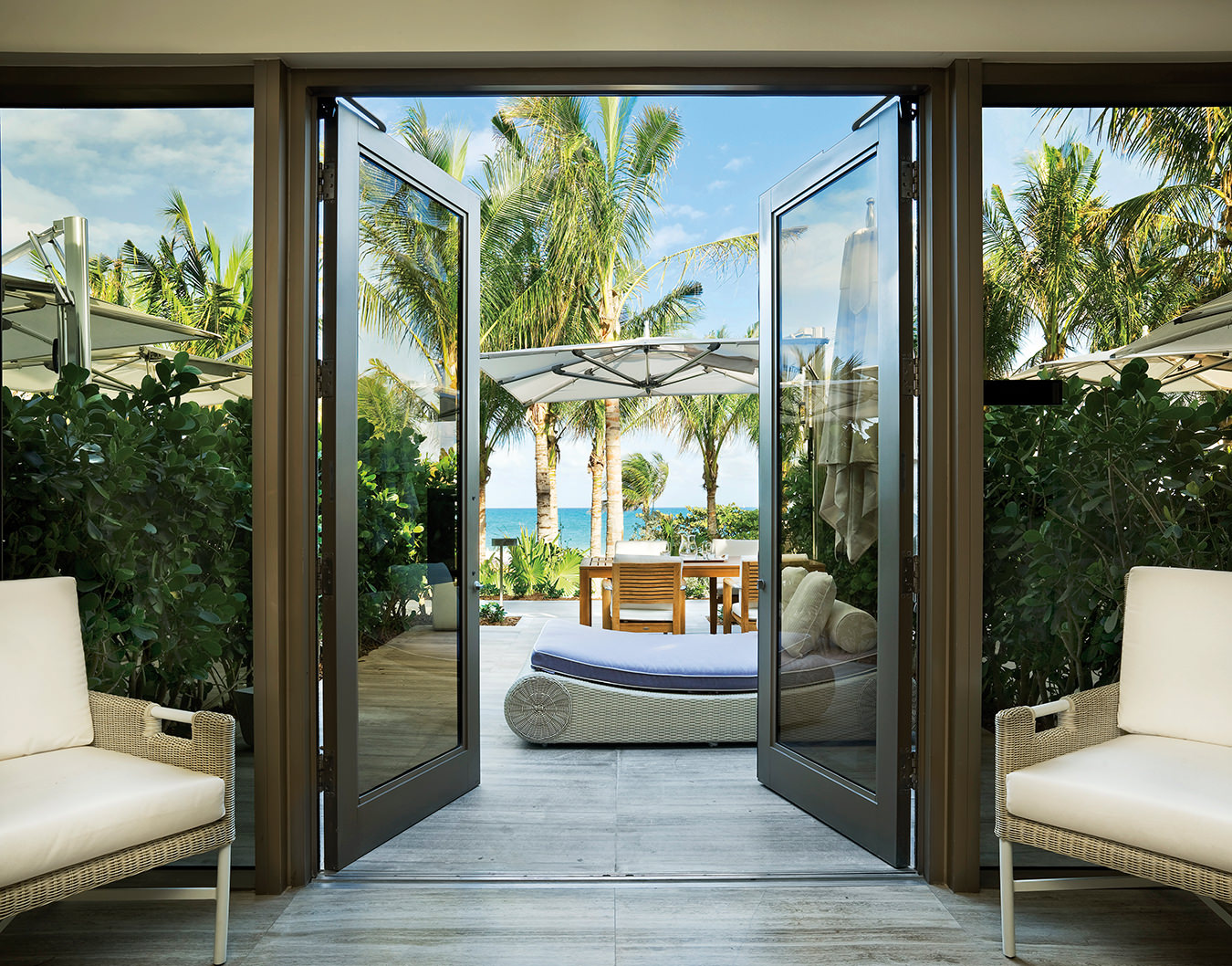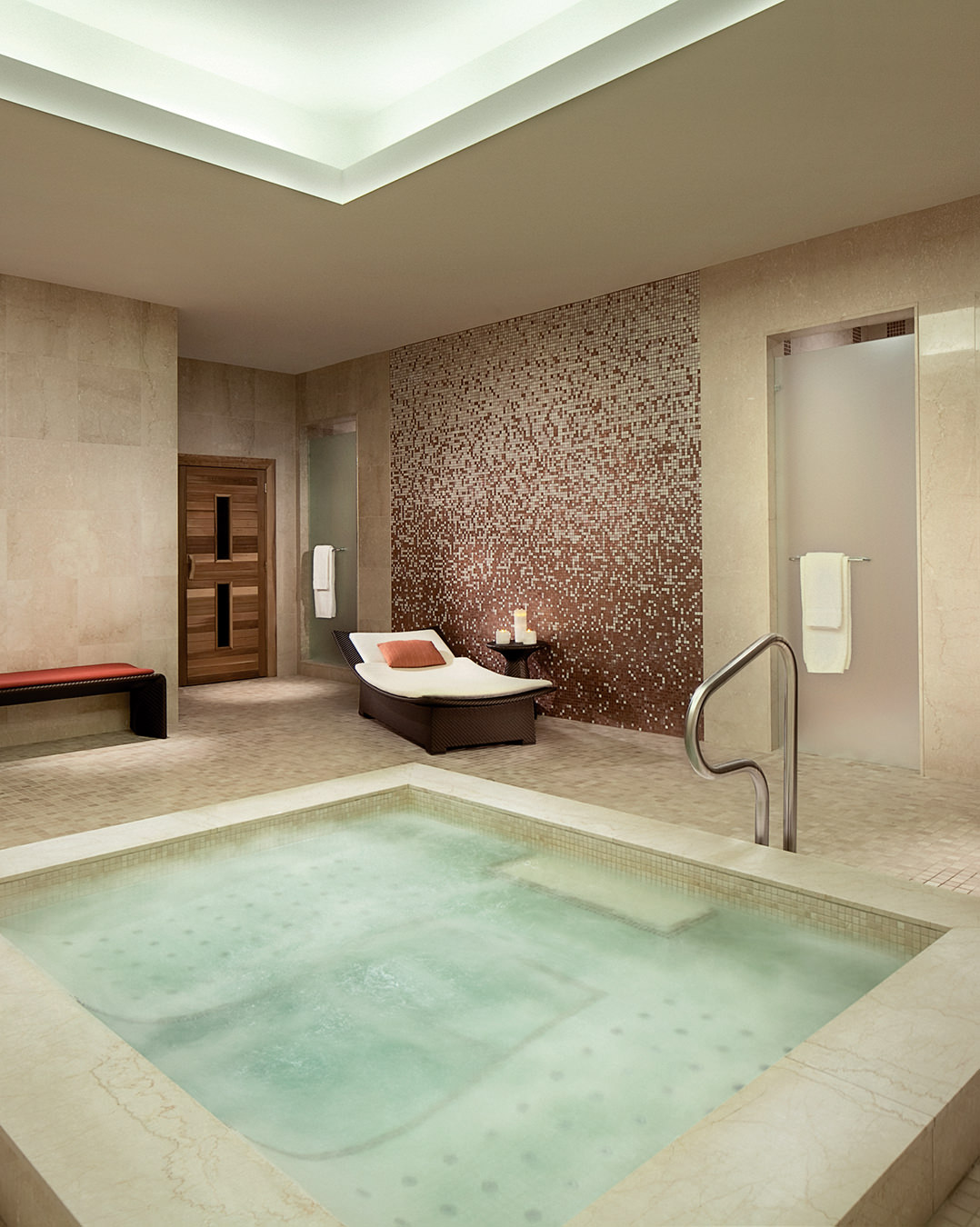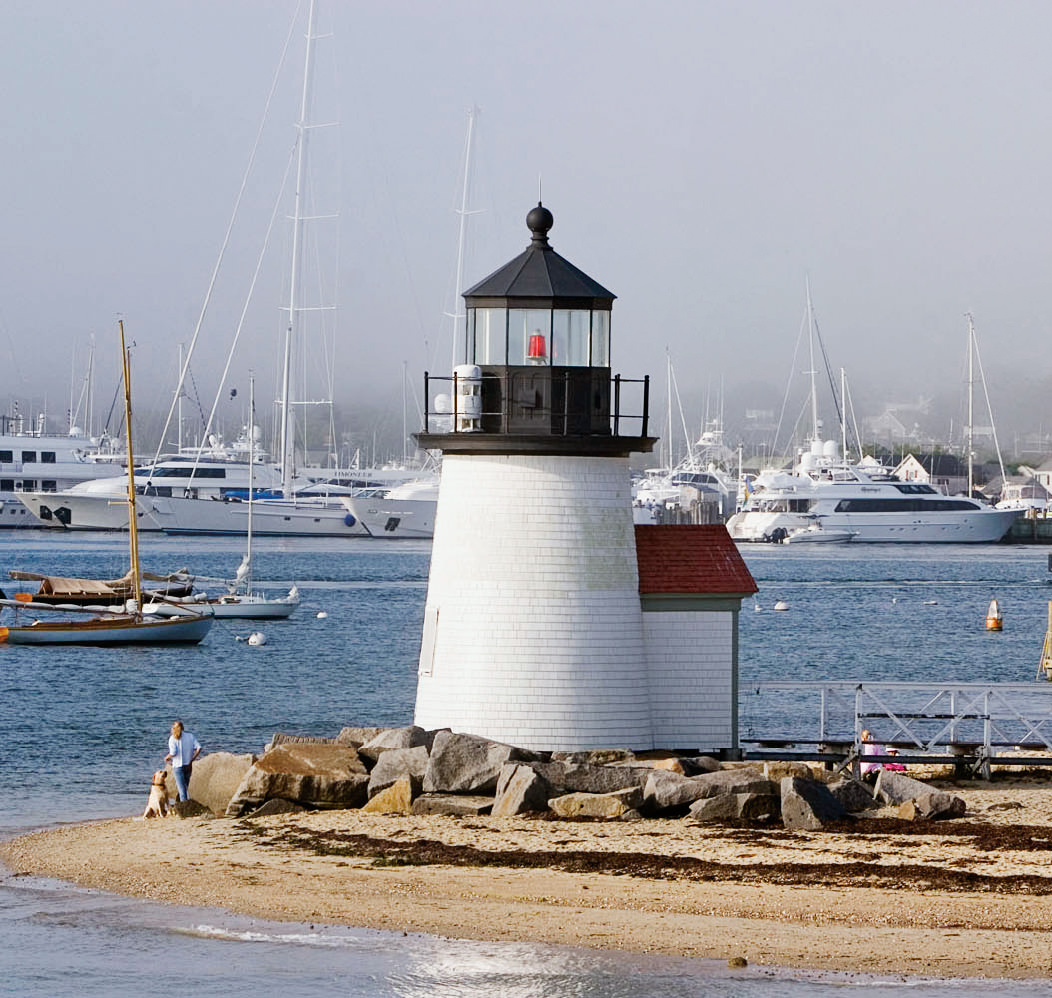-
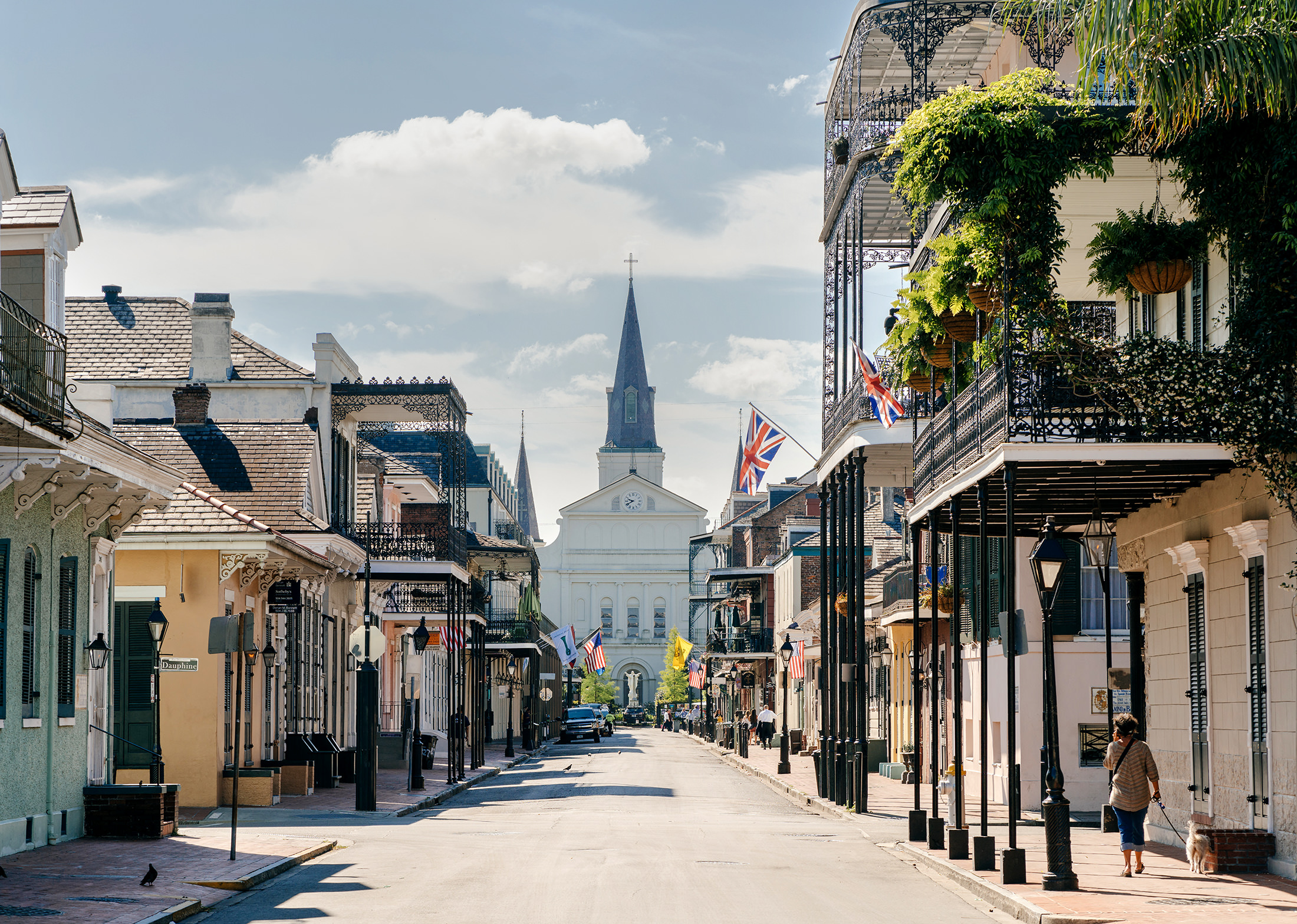
Photo by Paul Broussard.
-
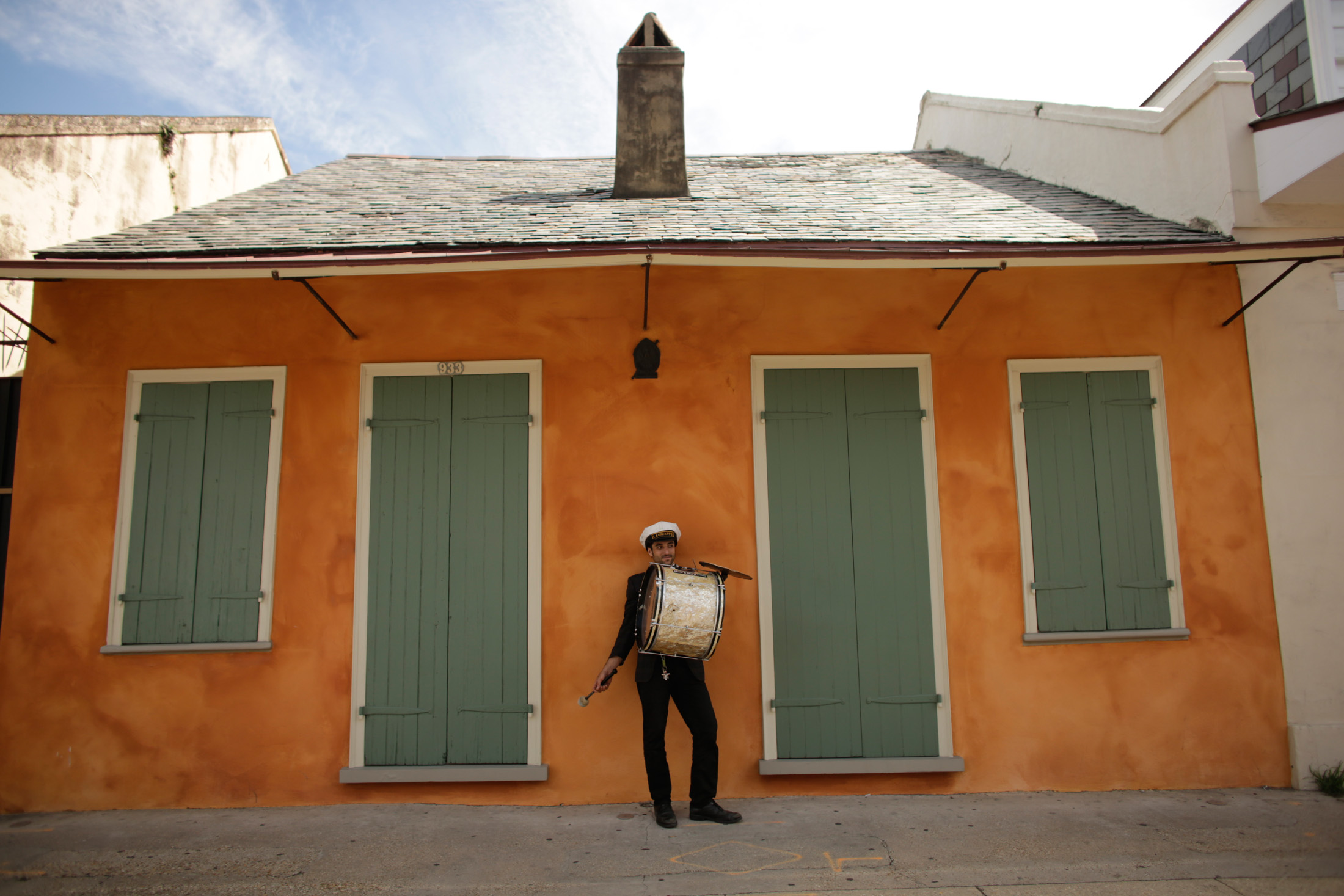
A French Quarter musician. Photo by Chris Granger.
-
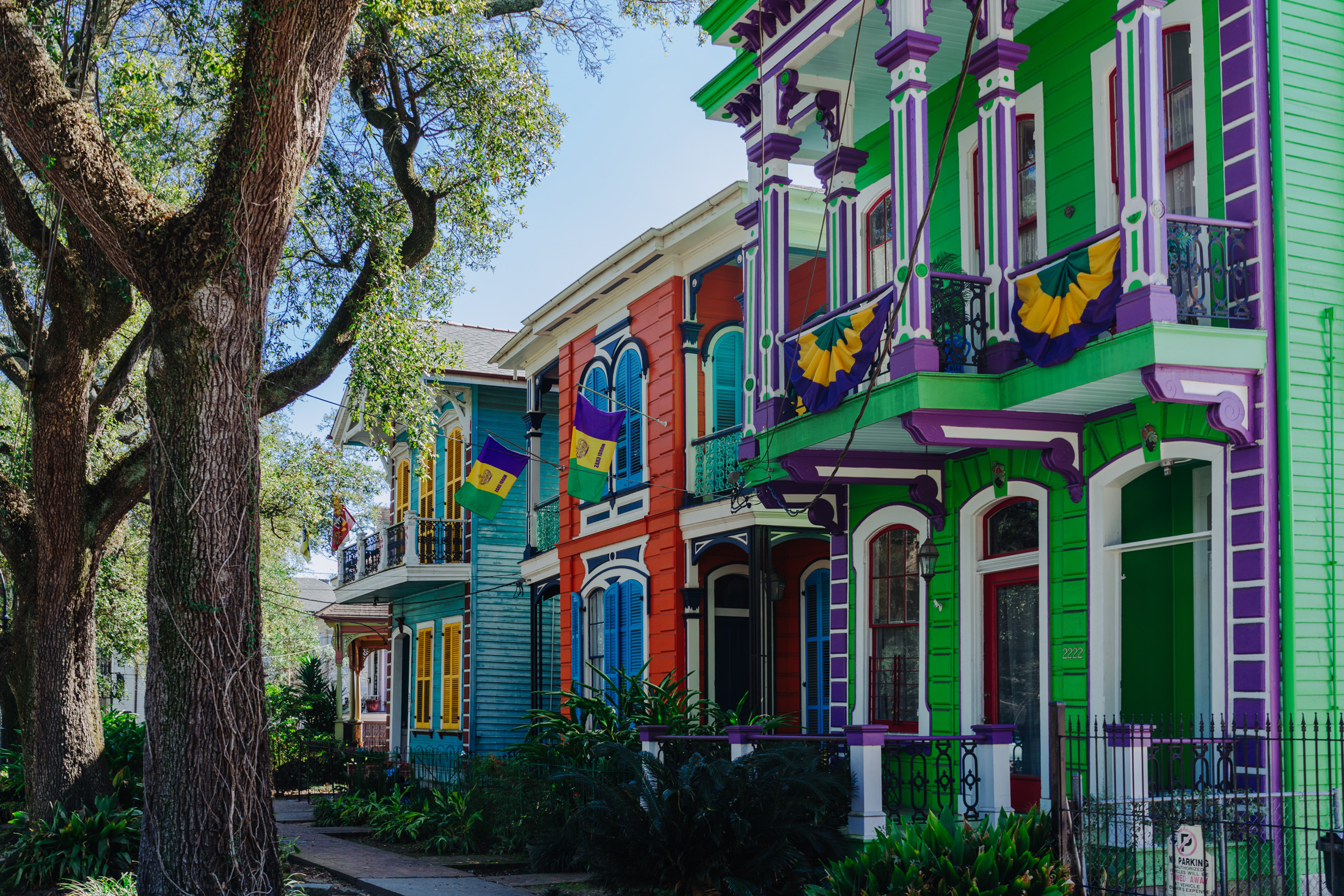
Decorations for Mardi Gras. Photo by Paul Broussard.
-
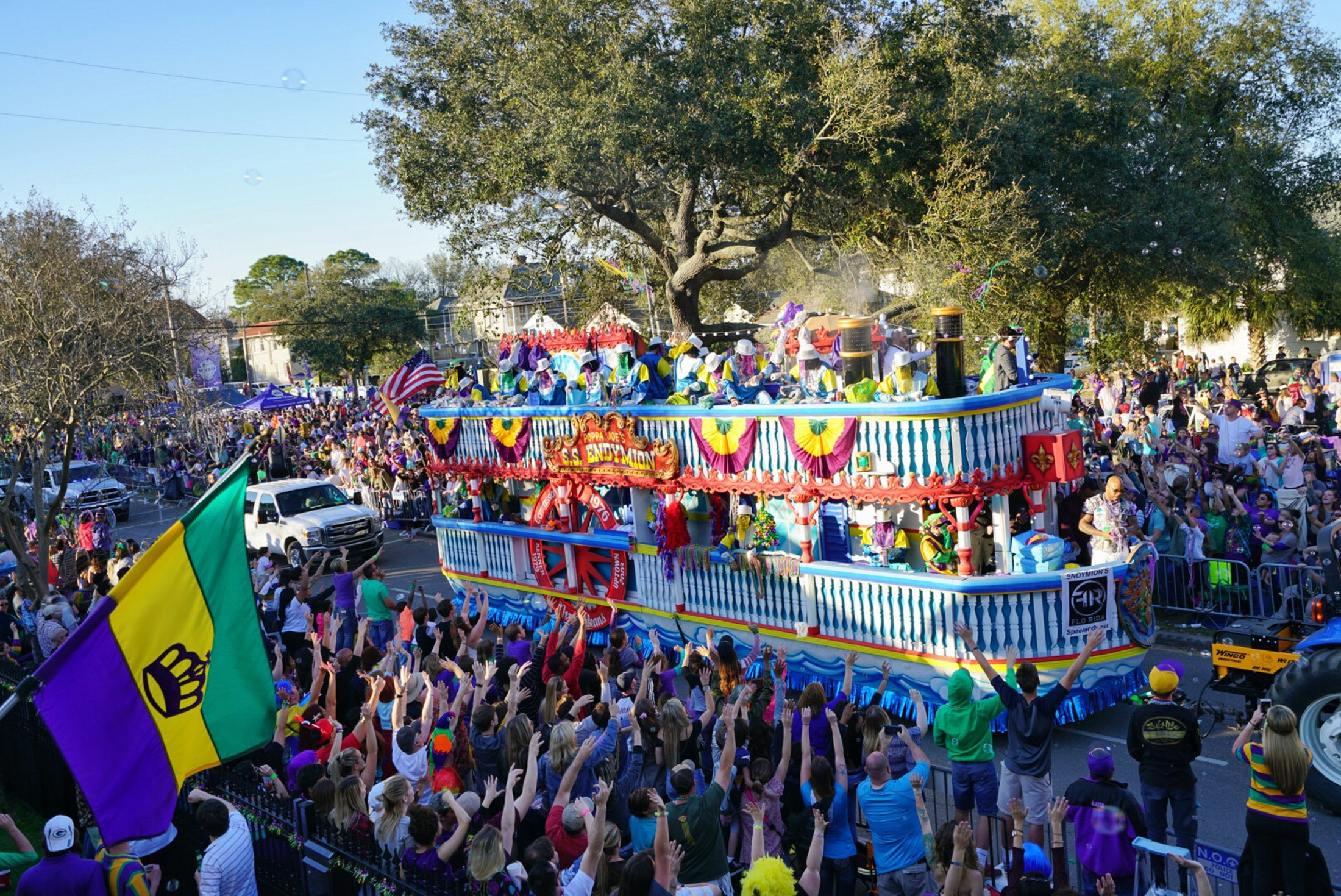
Most of NOLA shuts down for the main spectacle of Mardi Gras. Photo by Paul Broussard.
-
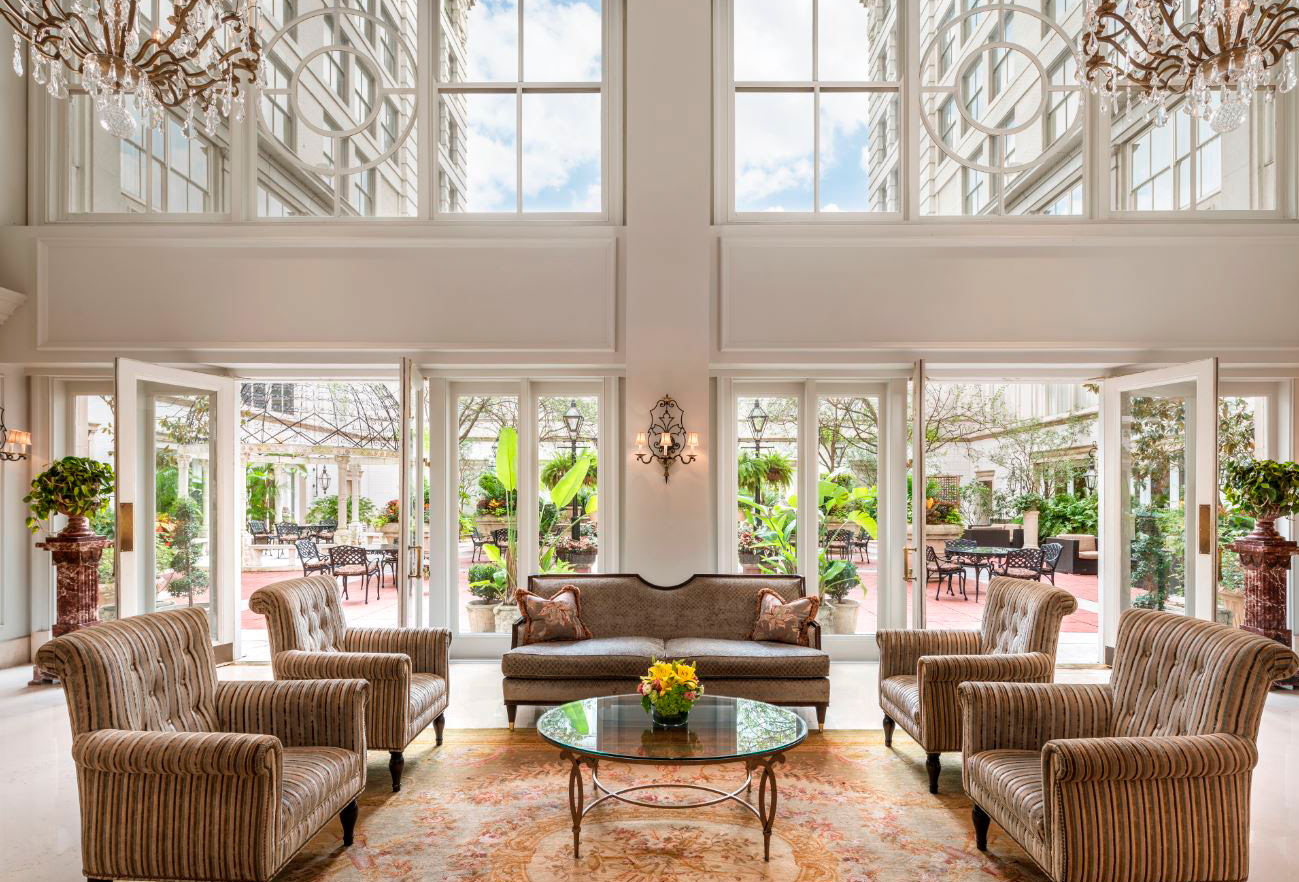
The lobby of the Ritz-Carlton, New Orleans, built within a beaux-arts building.
-
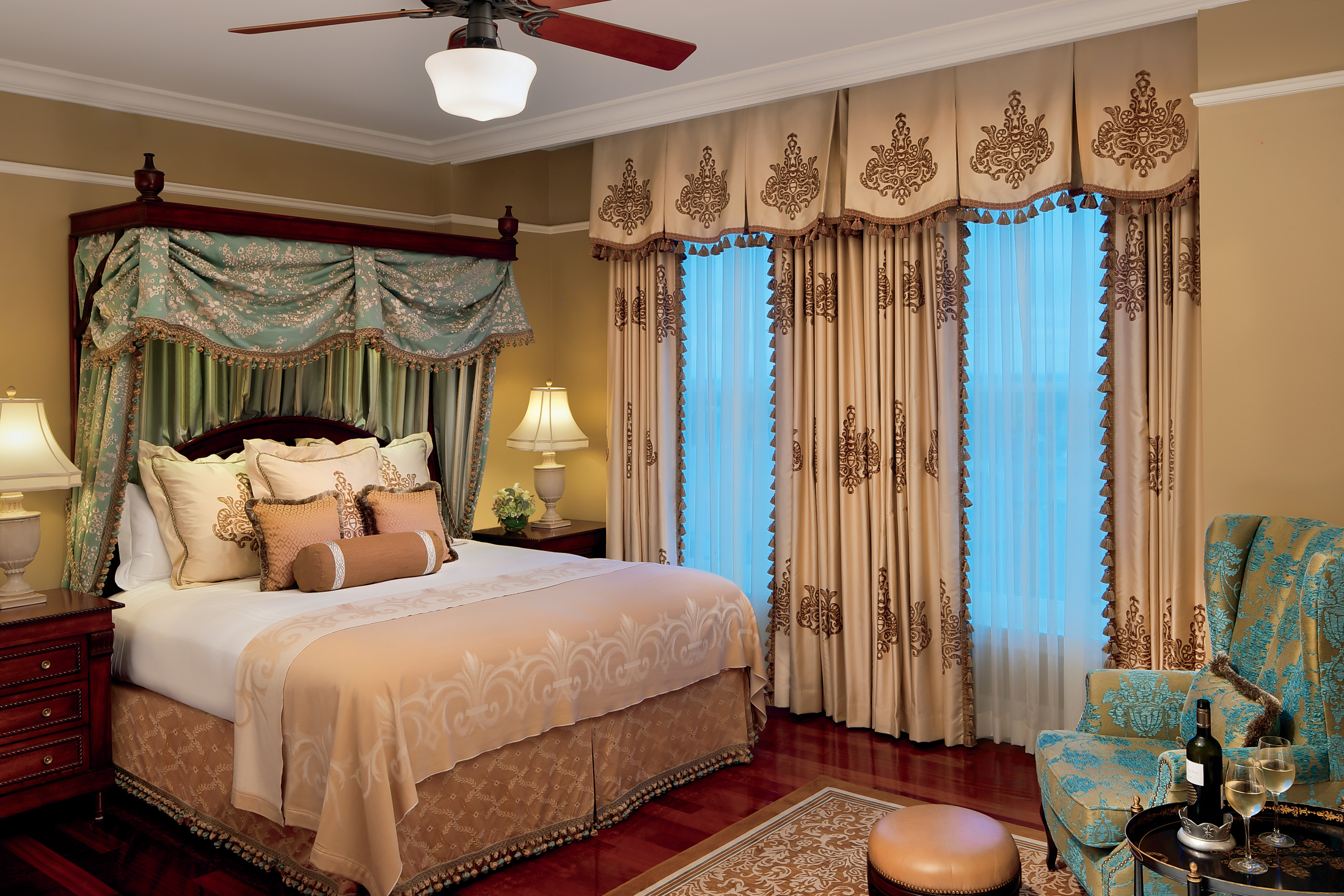
A guestroom at the Ritz-Carlton, New Orleans.
-
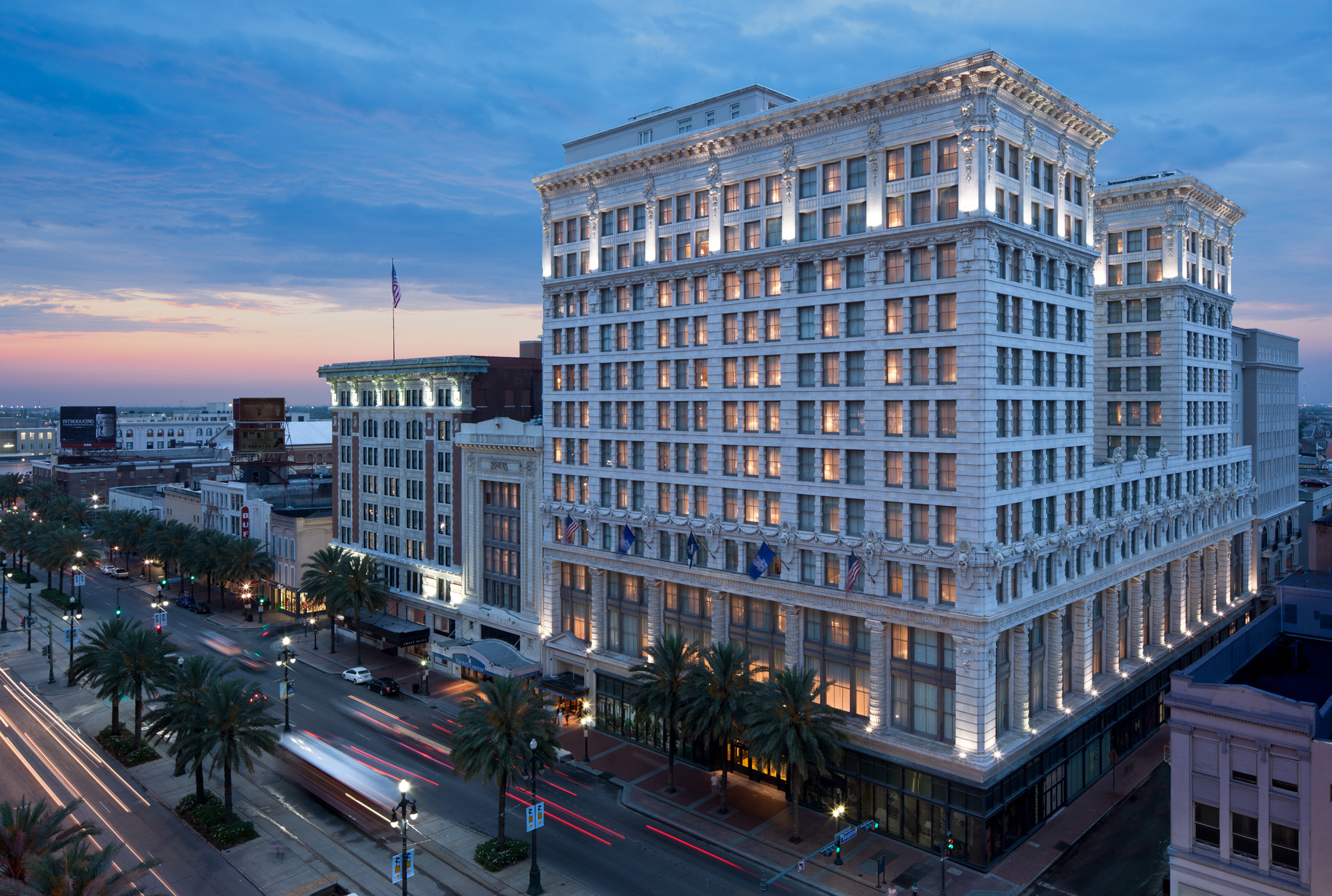
The exterior of the Ritz-Carlton, New Orleans at dusk.
-
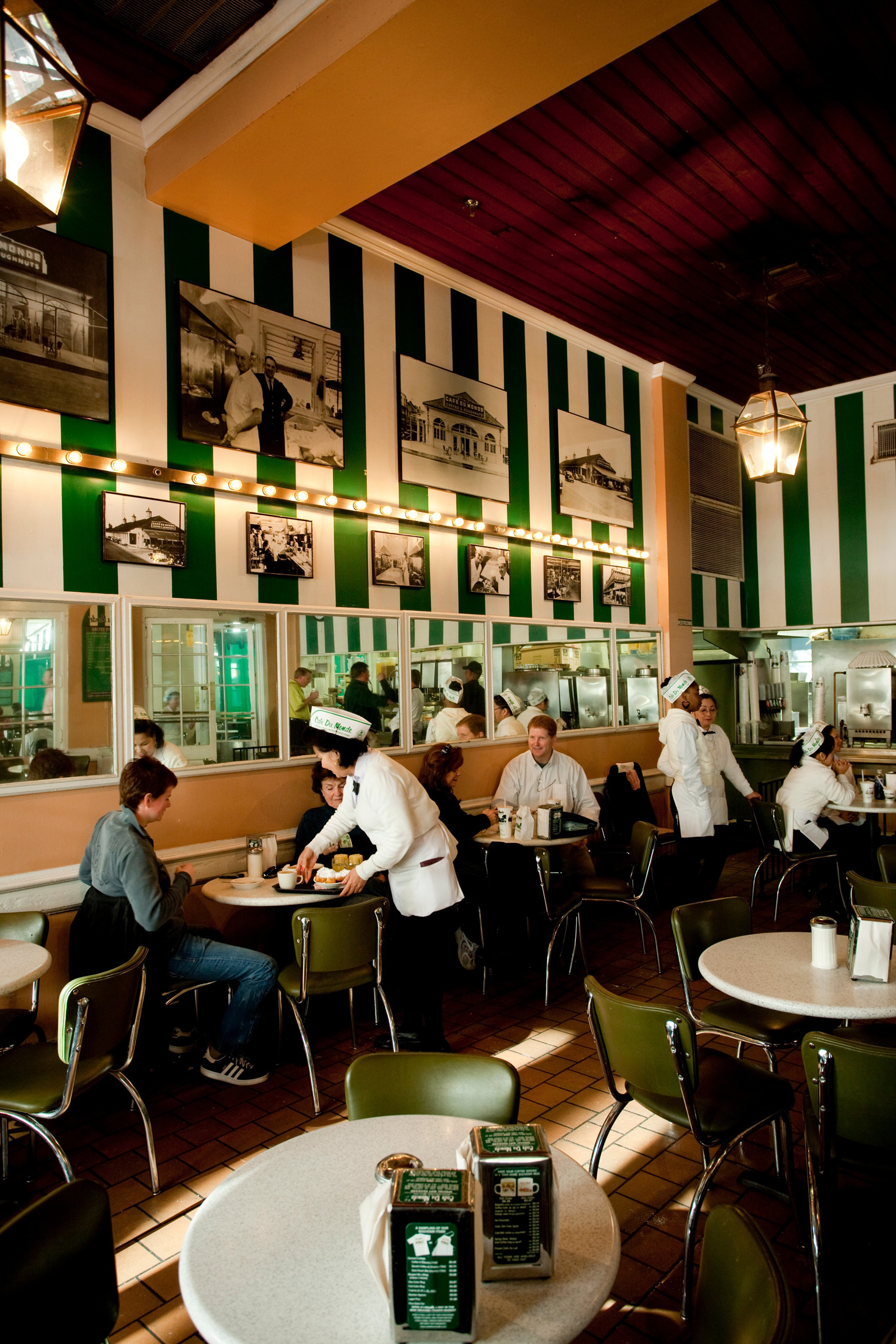
Café du Monde is famous for their icing sugar–dusted beignets.
-

A snapshot of New Orleans architecture. Photo by Paul Broussard.
New Orleans Lives Large
Go big or go home.
There is no better time to visit the Big Easy than now. Last year, New Orleans celebrated its tricentennial, but the city’s 400,000 residents don’t need an anniversary to party—they are committed to living large year-round.
Mardi Gras is, naturally, the favourite fête. Most of NOLA shuts down for the main spectacle, making way for the “krewes”—non-profit “carnival clubs” that coordinate the festivities and walk in the parades—to colourfully clog the streets. Even though Fat Tuesday falls on March 5 this year, lead-up parades began back in January. It’s well advised to check the city’s festival schedule before planning a trip for any month; it all depends on how much you like crowds.
The Mardi Gras tradition dates back to 1699, but the modern krewes are a more recent phenomenon that may well have started with a secret society of businessmen who staged a parade in 1857. These days, there are long wait-lists to join the revered groups that dress up and toss garlands of plastic beads as they dance their way down to Canal Street.
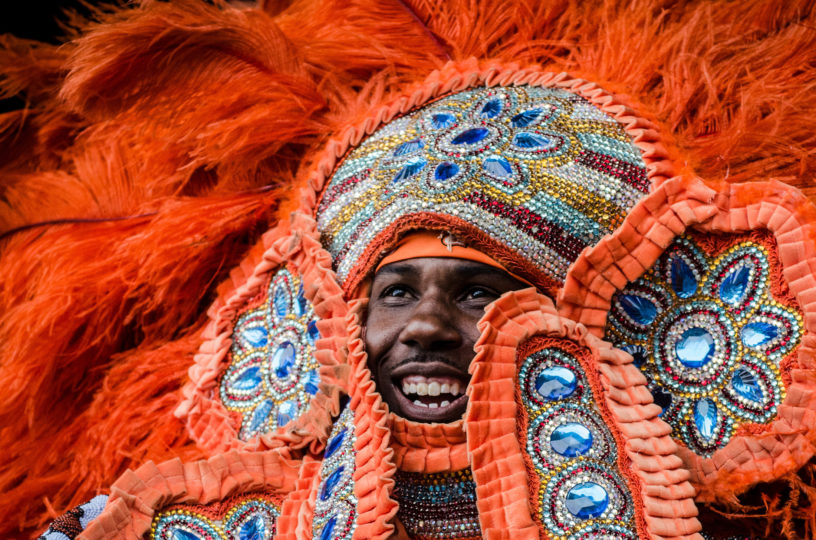
Mardi Gras is, naturally, the favourite fête of New Orleans. Photo by Pableaux Johnson.
Like New Orleanians themselves, the whole shindig is fiercely independent; the city isn’t even involved in coordinating parades, only in providing permits. “There is no corporate Mardi Gras, and there never will be,” asserts Emily Anne, a New Yorker by birth, but New Orleanian at heart who leads tours of the city. “You have to remember that New Orleans isn’t just a city; it’s a lifestyle package.” Jessica Sigmundsson, communications coordinator at the visitor’s bureau New Orleans & Company, adds to that: “The longer you live here, the more costumes you accumulate. That’s just our way of life.”
If Mardi Gras–sized gatherings aren’t your cup of tea, the famed French Quarter still oozes with joie de vivre on any given night. Revellers stroll the streets holding boozy drinks in paper cups, Vegas-style—only instead of passing by megalithic new hotels, heritage-designated Creole townhouses and centuries-old bars set the scene. As day turns to night, anything seems possible, from a tarot card reading in Jackson Square to an impromptu dance party as street corners transform into stages in the blink of a busker’s eye. Jazz aficionados head to Frenchmen Street, dotted with hole-in-the-wall clubs like the Spotted Cat and Apple Barrel. The people here are serious listeners, with their eyes closed and bodies moving rhythmically.
Over at the Starlight lounge, you can have your cocktail and music in the company of resident ghosts, Adelaide and Bartholomew, the spirits of two children who are said to tug at bouncers’ coats. Hauntings are common about the city, and nods to voodoo ever-present. It was enslaved West Africans who first brought voodoo rituals to Louisiana, their beliefs merging with local Catholic practices and strengthened by an influx of followers fleeing Haiti during the slave revolt of 1791. In the 1800s, voodoo kings and queens held political and spiritual positions of power here, and to this day traditions of mystery and ritual permeate New Orleans culture.
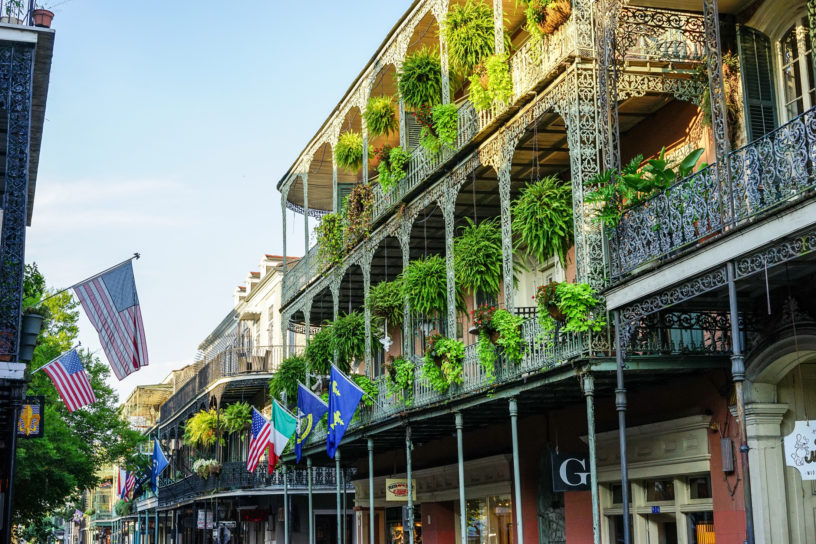
The famed French Quarter oozes with joie de vivre on any given night. Photo by Paul Broussard, courtesy of New Orleans & Company.
Even if you aren’t looking for ghosts, a few haunted places should be frequented for a bite. The family-owned Antoine’s is one of them. Founded in 1840 by an Italian Creole, it is where both shrimp étouffée and oysters Rockefeller were invented. On a more casual note, but equally heavy with spirits, is Lafitte’s Blacksmith Shop Bar. Built in the 1720s, it is one of the oldest bars in North America.
After a night out, follow your nose to Café du Monde in the morning for a paper bag of their famous icing sugar–dusted beignets, then seek out lunch at one of the famed Brennan restaurateur family hot spots. Ralph’s on the Park is the most scenic, serving Southern dishes like turtle soup overlooking a park filled with Spanish moss–covered oak trees.
Tranquility is a gift in a city like this, and you’ll find it in spades at the Ritz-Carlton, New Orleans. Located on the edge of the French Quarter—the city’s vibrant historic heart—its elegant bones were built over a century ago. As expected with the Ritz-Carlton, luxury pervades, from the lobby’s Moët & Chandon vending machine to the 25,000-square-foot spa. On the fourth floor Club Level, service has a little extra panache: complimentary bites and limitless wine offered in a private space with quiet nooks for reading and writing. Chic to-go cups are encouraged by the bubbly hostesses, who love to trill, “Why not take a glass of wine for the road, sweetie?” Why not, indeed.
_________
Never miss a story. Sign up for NUVO’s weekly newsletter.


